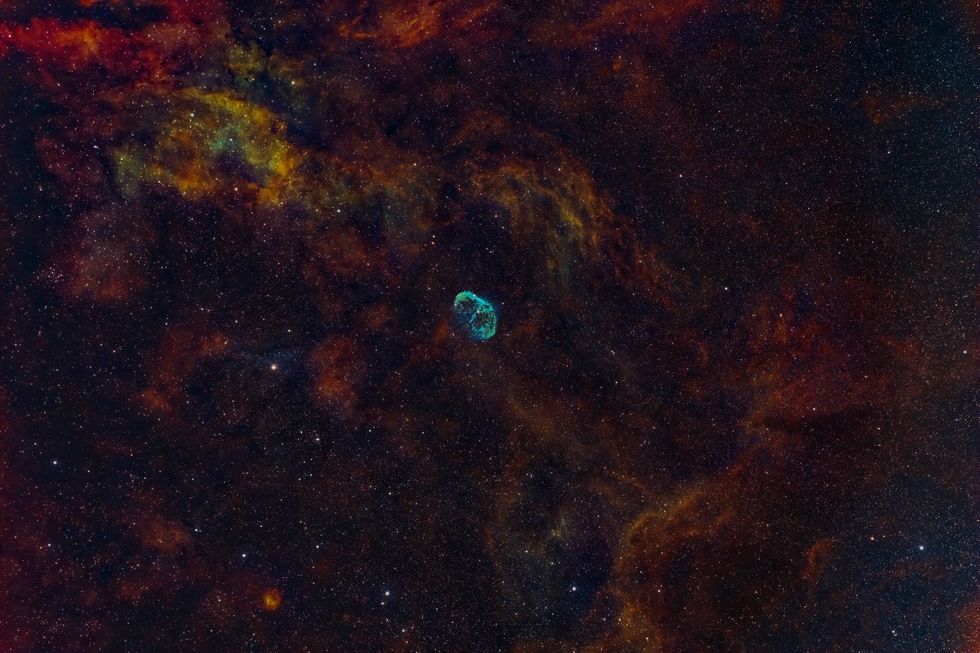Crescent Nebula Widefield
Crescent Nebula Widefield
NGC 6888 (also known as the Crescent Nebula or C 27) is a diffuse nebula in the southern part of the constellation Cigno.Si located 2.5 degrees southwest of the star γ Cygni, just west of a very rich star field, which includes objects such as M29 and IC 4996. The most intense part of the nebula is located in the western part, and forms an arc extended more in declination than in right ascension; this characteristic has caused the nebula to be called crescent, since it has the "hump" to the west, like the Moon in the waxing phase. To locate it you need a telescope, even if it has a small aperture; binoculars allow you to barely catch a glimpse of it in clear sky conditions. It is a typical stellar wind bubble generated by a massive Wolf-Rayet star (HD 192163), which is located inside it; This star would also be responsible for the nebula, which would constitute the material of the outermost layers of the ejected star. This wind collided with the material ejected from the star during the red giant stage, between 250,000 and 400,000 years ago, energizing it. The result is a gaseous shell and the presence of two shock waves, which then interacted with the dense surrounding interstellar medium.
In the past, it was also believed to have been a supernova remnant, whose progenitor star was part of the HD 192163 system. The nebula extends into space for a size of about 16 light-years.
In the past, it was also believed to have been a supernova remnant, whose progenitor star was part of the HD 192163 system. The nebula extends into space for a size of about 16 light-years.
SPECIFICATIONS
Telescope
SPA-1-CMOS
Camera
QHY 600M
Location
IC ASTRONOMY OBSERVATORY, SPAIN
Date of observation
From 24 August to 16 October 2024
Filters
SHO
Processing
Pixinsight and Photoshop
Credits
Credit Sauro Gaudenzi / Data Telescope Live


